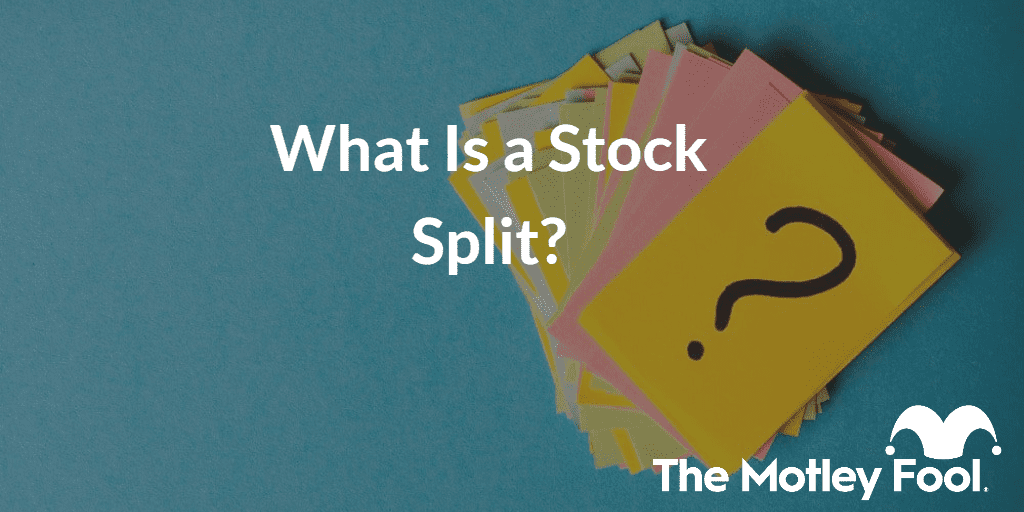A stock split is a common way for a company to increase or decrease its share count without changing its market capitalization or stock value. It’s usually done to improve liquidity.
While stock splits themselves shouldn’t affect an investor’s portfolio, they might have ripple effects that could, over the long term, impact an investor’s holding of the stock.
Below, we’ll tell you everything you need to know about stock splits.
What is a stock split?
Companies split stocks in order to multiply (or divide) outstanding shares, typically to alter the share price and encourage investors to buy.
For example, a company might want to triple the number of its outstanding shares. To do that, it’ll give shareholders three shares for every one share they own. In this way, a shareholder will have triple the amount of shares, though the overall price of their holding doesn’t change (at least not in theory).
Why do companies split stocks?
Often companies split stocks to make the price for one share cheaper, thus making them more attractive to investors. This is often the case when a stock price has become very high, making it too expensive for many investors to buy a reasonable number of shares.
But companies don’t always multiply their outstanding shares. Sometimes, if share prices have dropped too low, they’ll divide shares. A company might want to divide shares to avoid being delisted from stock exchanges, or it might want to be perceived as having a higher stock price, and thus be more attractive to investors.
What is a forward stock split?
When a company multiplies its shares, we call that a forward stock split. In a forward stock split, a company will issue new shares to its stockholders, increasing the total number of shares available.
Let’s say a company wants to triple the number of its outstanding shares. It will announce a “3-for-1” forward split, meaning it’ll issue three shares for every one share that stockholders own.
If you owned 10 shares of this company’s stock, you would have 30 shares after the effective date of the split. This doesn’t mean your personal holding has tripled in value. It just means you have triple the number of outstanding shares, with each individual share being worth one-third of what it was before.
If this stock was worth $30 before the 3-for-1 split, then it would be worth $10 after.
What is a reverse stock split?
When a company divides its shares, we call that a reverse stock split. In a reverse stock split, a company takes shares away from stockholders, decreasing the total number of outstanding shares on the market and increasing the price per share.
Let’s reconsider our example from above. Instead of a 3-for-1 forward split, imagine this company executes a 1-for-3 reverse split. That means, if you owned 30 shares of this company’s stock, you would own 10 shares after the effective date. Likewise, if the stock’s share price was $10 before the split, it would be $30 after.
What are stock split ratios?
Stock split ratios tell you how many shares stockholders will receive in exchange for the number of shares they currently own. For example, in a 3-for-1 stock split, stockholders will receive three shares for every one share they own.
The ratio itself will tell you if a split is forward or reverse. If the first number is larger than the second (as in the example above), then the split is a forward split. When the first number is smaller than the second (1-for-3, for example), it is a reverse split.
How does a stock split affect your portfolio?
In theory, a stock split won’t affect your holding. If you have $1,000 in a company’s stock before a split, then your holding will be equal to $1,000 after, no matter how many shares you own.
That said, a stock split could impact a stock’s price over the long run. Lowering the stock’s share price can open the company to new investors, especially those who couldn’t afford the stock when the price was high. This, in turn, could cause a spike in demand, which will push the stock’s share price higher.
Likewise, if a company has to divide its shares, it might indicate that it’s heading for hard times. This could encourage investors to sell their holdings, thus causing a drop in its share price.
Foolish bottom line on stock splits
Again, a stock split doesn’t affect the market capitalization of a company, nor should it have an immediate impact on your holding. As far as your confidence in the company goes, a forward stock split shouldn’t change your feelings: so long as the company is still in good standing, you don’t have anything to worry about.
A reverse stock split, however, might indicate that a company is going through some hard times. If you own stocks in that company, you might want to analyze the company’s finances in order to decide if it’s still worth investing in.
A reverse stock split doesn’t always mean the company is a bad long-term pick. But it doesn’t hurt to re-evaluate your commitment, especially if the stock’s share value has gone down considerably.
